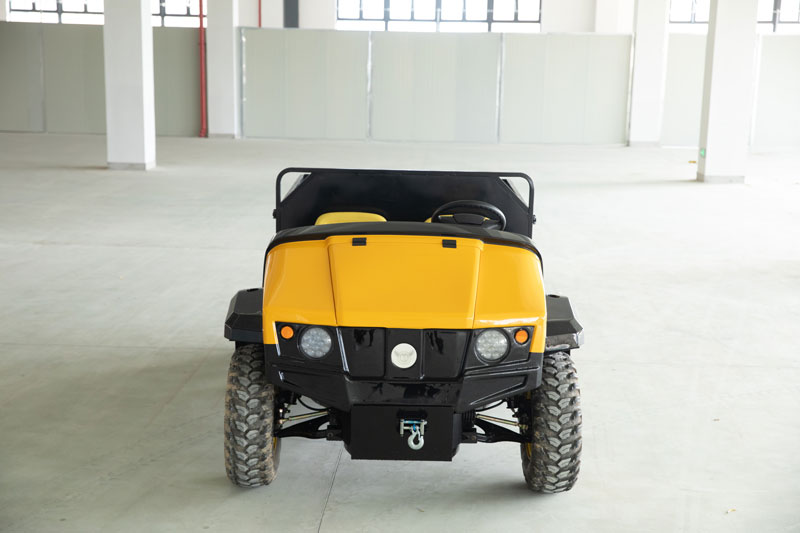The utility vehicle (UTV), with its strong all-terrain adaptability and diverse applications, is the preferred vehicle for farmland, worksites and even outdoor adventures. At present, UTVs on the market are mainly divided into two types: fuel driven and electric driven. This article will focus on comparing the features of these two powertrains to help consumers make informed choices, and introduce our six-wheeled electric UTV MIJIE18-E.


Advantages and disadvantages of fuel UTV
Oil-powered UTVs, which typically use gasoline or diesel as a power source, have the following advantages:
Strong power output: Oil engines excel in high power output and are suitable for scenarios requiring high speed and high load operations.
Easy refueling: Fuel UTV can be refueled quickly, has a long battery life, and does not require a long charging time.
Extensive maintenance network: Due to the long history of fuel vehicles, the repair and maintenance network covers a wide range of users can easily carry out maintenance.
However, fuel UTVs also have some drawbacks:
Environmental pollution: The exhaust gas emitted by the fuel engine has great environmental pollution, which does not meet the modern environmental protection requirements of the contract.
Loud noise: The fuel engine produces a large noise when running, which will have a certain impact on the user and the surrounding environment.
High maintenance costs: lubrication, filtration and other systems of fuel engines require regular maintenance, and the cost is high.
Advantages and disadvantages of electric UTV
Electric UTVs are battery-powered, and in recent years, with technological advances, electric UTVs have greatly improved their performance:
Environmental protection and energy saving: Electric UTV has zero emissions, no exhaust gas, and is friendly to the environment.
Low noise: The electric drive is quiet and noiseless, enhancing the user's driving comfort.
Simple maintenance: the motor structure is relatively simple, the failure rate is low, and the maintenance cost is low.
However, electric UTVs also have some limitations:
Limited range: Limited by battery capacity, the range is usually less than the fuel UTV.
Long charging time: Electric UTVs take some time to charge and cannot be recharged as quickly as fuel UTVs.
High initial cost: High initial investment in high-performance batteries and electric drive systems.
MIJIE18-E: Quality representative of electric UTV
MIJIE18-E, our six-wheeled electric UTV, perfectly integrates the advantages of electric UTV to meet the dual needs of modern users for environmental protection and performance. MIJIE18-E has the following features:


High load capacity: Full load capacity up to 1000KG, suitable for all kinds of heavy duty operations.
Powerful power: Equipped with two 72V5KW AC motors and two Curtis controllers, the axial speed ratio is 1:15, the maximum torque is 78.9NM, and the climbing ability is up to 38%.
Safety performance: The semi-floating rear axle design ensures the stability under heavy load conditions, and the braking distance is 9.64m in the empty car and 13.89m in the load, ensuring the driving safety.
Widely used: suitable for agriculture, construction, forestry and outdoor exploration and other scenarios.
Private customization: We provide private customization services, users can customize the vehicle according to specific needs.
The MIJIE18-E is more than just a high-performance UTV, it's a lifestyle choice. It provides users with a solution that combines strong working ability and environmental awareness, and is an important direction for the future development of UTV.
To sum up, the choice of fuel or electric UTV depends on the actual needs of the user and the use of the environment. In any case, electric UTVs like MIJIE18-E are gradually becoming the new darling of the market with their superior performance and environmental protection characteristics.
Post time: Jul-23-2024

